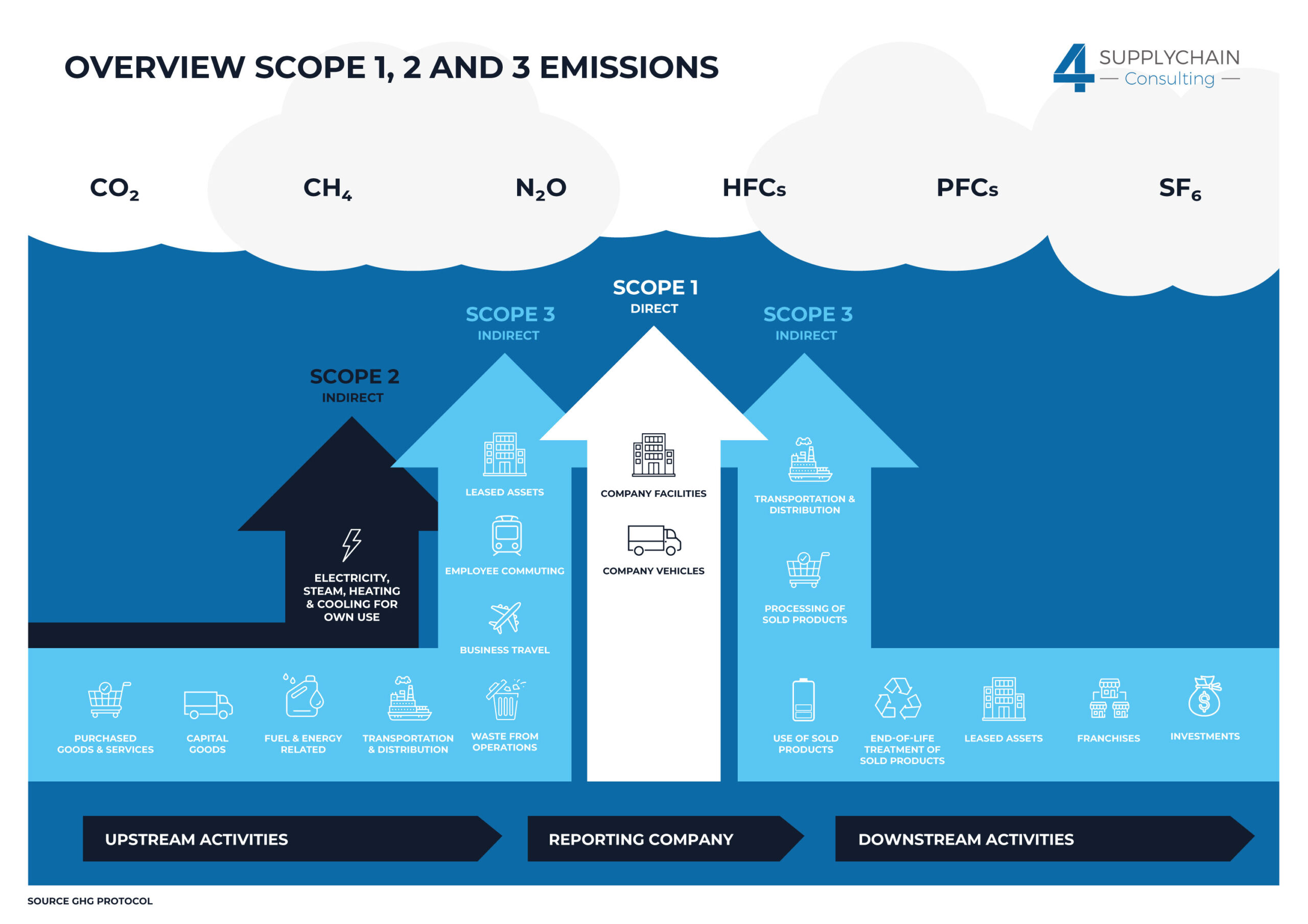Footprint as is
What is the footprint of my company or a specific flow or product? And how can I improve it? We can help you with that. This starts with a clear as is situation. We do this through innovative tooling that supports us to make a report that is transparent, reproducible and according to international standards (GHG protocol). The road to zero CO2 starts with measuring!
We will go through the following steps:
1. Why footprint?
It's good to establish why you want to do this as a company. Making environmental impact is important but there is more to it than that.
Lower footprint can in many cases lead to:
• save costs
• gain an advantage over your competitors
• innovate
• contiunity (given changing regulations)
2. Establishing scope
Together with the customer, we create a supply chain map in which we record the scope. This provides clarity about which choices have been made and is also input for future reports.
We recommend mapping scope 1,2 and 3 for a complete picture. Also considering current regulations within the EU will oblige you to do so. Is this new for you? We are happy to explain it to you during a first meeting.
3. Data collection and assumptions
Developing a data method is partly determined by the complexity and availability of data. We help the client to obtain the right data from suppliers and customers, making assumptions. We have multiple databases from which we can extract emissions of, for example, ingredients, materials and energy. Often customers have multiple suppliers and also customers. We will therefore have to make assumptions to arrive at an overall footprint. We do this transparently and together with the customer.
4. Establish target, report and communication
Current axis is provides a basis for setting a target and often communicating it. We can help you with this as well. It is very strong to let your network know that you are taking your footprint seriously and indicate what you are going to do about it. Our reports are according to GHG standards and can therefore also be used for multiple purposes.
After capturing your current footprint, the next phase begins. You now know where most of your emissions are. Based on that, we can help you create a roadmap to improve your footprint.

